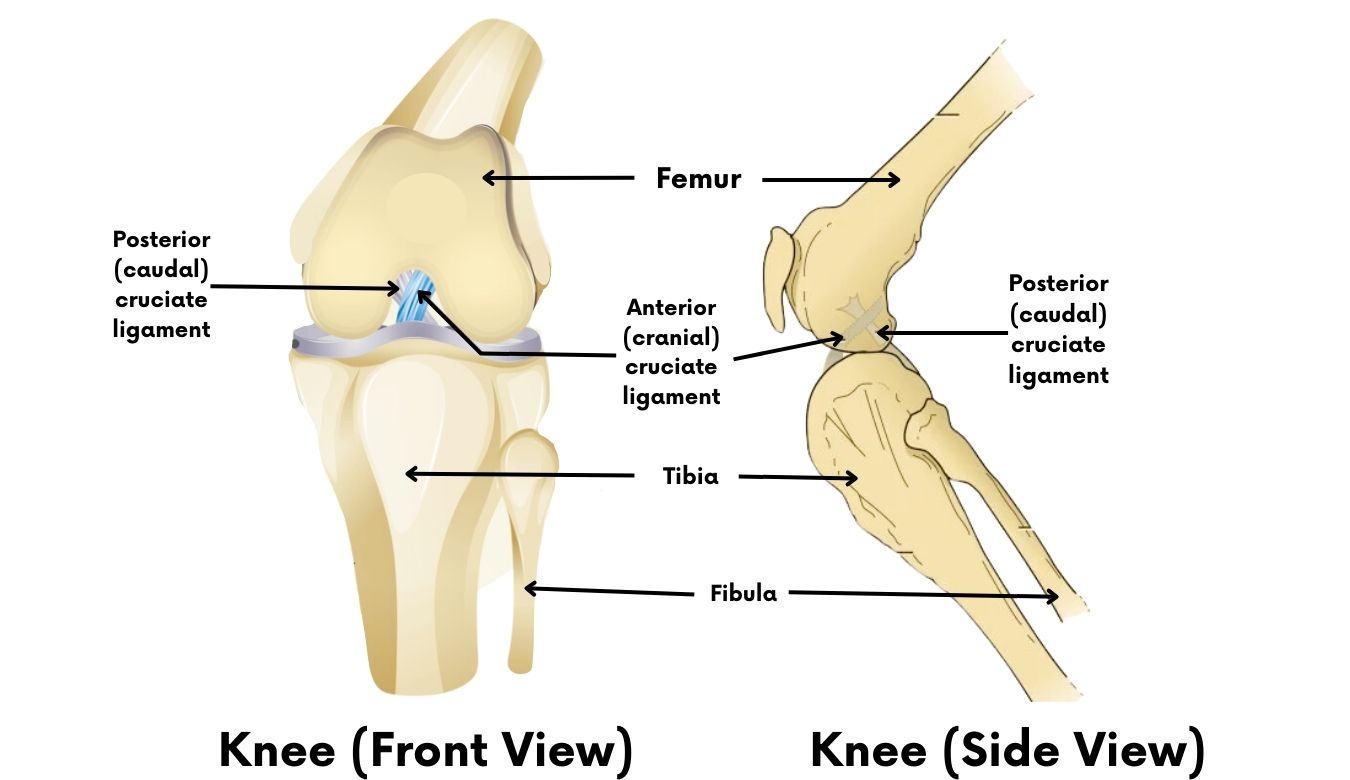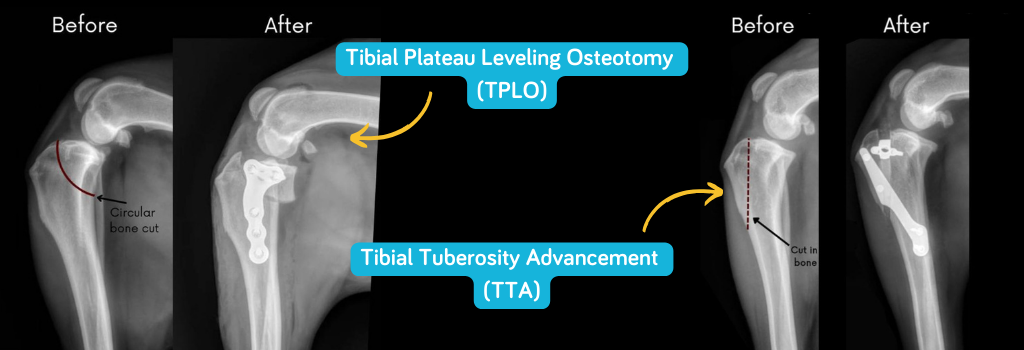If your dog has been diagnosed with a torn cranial cruciate ligament (CCL), you're not alone. This is the most common orthopedic injury in dogs, and at The Hometown Veterinarian in Marshalltown, Iowa, we’ve helped countless pets recover and return to happy, active lives.
While it may feel overwhelming, understanding what a CCL injury is—and what to do next—can make a world of difference in your dog’s comfort and long-term health.
What Is a CCL Tear?
The cranial cruciate ligament (CCL) in dogs functions similarly to the ACL in humans. It stabilizes the knee (stifle) joint and helps control movement between the femur and tibia. When this ligament partially or fully tears, the knee becomes unstable. Dogs may suddenly limp, hold up a back leg, or show signs of stiffness and pain.
Unlike human ACL injuries, dog CCL injuries are often degenerative—meaning the ligament weakens over time before tearing. Without surgical correction, the joint remains unstable, leading to chronic pain, arthritis, and muscle loss. Veterinary surgeons are becoming more and more convinced that even a partially-torn CCL should be treated because the problem will only worsen.
What Doesn’t Work
There are many products and claims online, but it's important to be cautious. Based on decades of experience:
-
Braces do not stabilize the joint the way surgery does. Unless fully custom-made, they often cause painful pressure wounds and don’t stop disease progression.
-
Supplements can’t heal a torn ligament. They may support joint health but cannot repair a ruptured CCL.
-
Waiting it out only makes things worse. A torn ligament will not heal on its own and delaying treatment increases arthritis and reduces the chance of full recovery. Unfortunately, we see many dogs that were receiving pain relievers that did help them feel better but do not correct the problem. One must understand that controlling pain with medicine is a good thing, but it will not lead to healing.
What Does Work: Surgery
Surgical Treatment: TPLO and TTA
At The Hometown Veterinarian, we offer two advanced, biomechanical surgeries designed to restore normal knee function without relying on the damaged ligament:
-
TPLO (Tibial Plateau Leveling Osteotomy): This procedure involves reshaping the top of the tibia to change the joint’s angle, allowing the knee to function normally without the CCL.
-
TTA (Tibial Tuberosity Advancement): This technique moves the shin bone forward, changing how the joint handles force and eliminating the need for the ligament.
-
Closing Wedge Osteotomy (CWO): More commonly used in Europe but available in select U.S. practices, this technique involves removing a wedge of bone from the tibia to change the slope of the joint surface. It is particularly useful in specific anatomical cases and provides similar outcomes to TPLO.
These procedures provide long-term stability, faster recovery, and excellent outcomes when compared to more outdated methods such as extracapsular lateral suture (ECLS) repair.
Why We Don’t Recommend Extracapsular Repair
While this older technique was once widely used, especially in smaller dogs, it has a high failure rate over time and often requires revision surgery. It relies on scar tissue for stability, which takes longer to develop, and often doesn’t provide lasting results. Further, arthritis continues to progress even after surgery. At our practice, we no longer recommend nor perform this technique.
How We Choose the Right Surgery
Before surgery, veterinarians must take precise radiographs to evaluate your dog’s tibial plateau angle (TPA)—a key measurement that helps determine which surgery is best. In some cases, the plan may change on the day of surgery based on these findings. The goal is to choose the most effective and appropriate method for your dog’s specific anatomy.
What to Expect from Recovery
-
Most dogs begin walking on the leg within a few days.
-
Full healing takes 8–12 weeks.
-
Recovery includes strict rest, short leash walks, and gradual activity increases.
-
We strongly recommend laser therapy and physical rehabilitation to reduce pain, strengthen the leg, and speed up healing.
The Bottom Line
Your dog’s CCL rupture is treatable—and we’re here to help. With the right surgical plan and post-operative care, your dog can return to running, playing, and enjoying life without chronic pain.
If you have questions and you'd like to reach out to us, you can call us directly at (641) 758-3333, or you can email us at [email protected]. Don't forget to follow us on social media Facebook, Instagram.


